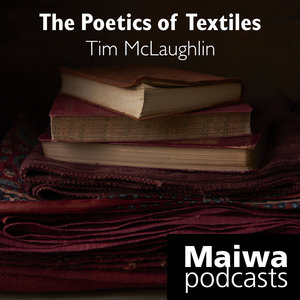2010 Maiwa Textile Workshops
Acid Dyes and Discharge on Silk
Ros Aylmer
$195 (Includes $60 Lab Fee) 2 full days
October 9, 10 (Sat, Sun) 10 am - 4 pm
Maiwa East – 1310 Odlum Drive, Vancouver, Canada
Class Limit 16
Registration Opens June 21, 2010
 In this two-day workshop we will play with the many effects that can be achieved with acid dyes and colour removal on silk. Acid dyes are formulated to work with protein fibres and are easy to use while giving a brilliant, fast colour. Using various shibori processes, the class will work toward a multi-layered cloth with complex colour patterning achieved through several immersions into the dye pots followed by colour removal through discharge with thiourea dioxide.
In this two-day workshop we will play with the many effects that can be achieved with acid dyes and colour removal on silk. Acid dyes are formulated to work with protein fibres and are easy to use while giving a brilliant, fast colour. Using various shibori processes, the class will work toward a multi-layered cloth with complex colour patterning achieved through several immersions into the dye pots followed by colour removal through discharge with thiourea dioxide.
Students will come away with a thorough understanding of this class of dyes as well as some of the various possibilities for discharging colour from cloth. They will take home a beautiful, hand-dyed, silk scarf.
ROS AYLMER
Ros Aylmer has an extensive background in the arts, with a BA in Fine Arts from Queens University (Kingston, Ontario), photography studies at Bournemouth and Poole College of Art, (Bournemouth, England), and textile studies at Capilano University (Vancouver, BC). She has over 20 yearsÕ experience working in surface design techniques and is active in a number of guilds and associations in BC. She was a founding member of fibreEssence Gallery, Vancouver.
Student Supply List
Please bring a bag lunch. All other materials provided.
Look for the full course calendar on the web in early May. A print version will be available in June. Registration opens June 21, 2010.
Acid Dyes and Discharge on Silk
Ros Aylmer
$195 (Includes $60 Lab Fee) 2 full days
October 9, 10 (Sat, Sun) 10 am - 4 pm
Maiwa East – 1310 Odlum Drive, Vancouver, Canada
Class Limit 16
Registration Opens June 21, 2010
 In this two-day workshop we will play with the many effects that can be achieved with acid dyes and colour removal on silk. Acid dyes are formulated to work with protein fibres and are easy to use while giving a brilliant, fast colour. Using various shibori processes, the class will work toward a multi-layered cloth with complex colour patterning achieved through several immersions into the dye pots followed by colour removal through discharge with thiourea dioxide.
In this two-day workshop we will play with the many effects that can be achieved with acid dyes and colour removal on silk. Acid dyes are formulated to work with protein fibres and are easy to use while giving a brilliant, fast colour. Using various shibori processes, the class will work toward a multi-layered cloth with complex colour patterning achieved through several immersions into the dye pots followed by colour removal through discharge with thiourea dioxide. Students will come away with a thorough understanding of this class of dyes as well as some of the various possibilities for discharging colour from cloth. They will take home a beautiful, hand-dyed, silk scarf.
ROS AYLMER
Ros Aylmer has an extensive background in the arts, with a BA in Fine Arts from Queens University (Kingston, Ontario), photography studies at Bournemouth and Poole College of Art, (Bournemouth, England), and textile studies at Capilano University (Vancouver, BC). She has over 20 yearsÕ experience working in surface design techniques and is active in a number of guilds and associations in BC. She was a founding member of fibreEssence Gallery, Vancouver.
Student Supply List
Please bring a bag lunch. All other materials provided.
Look for the full course calendar on the web in early May. A print version will be available in June. Registration opens June 21, 2010.
































